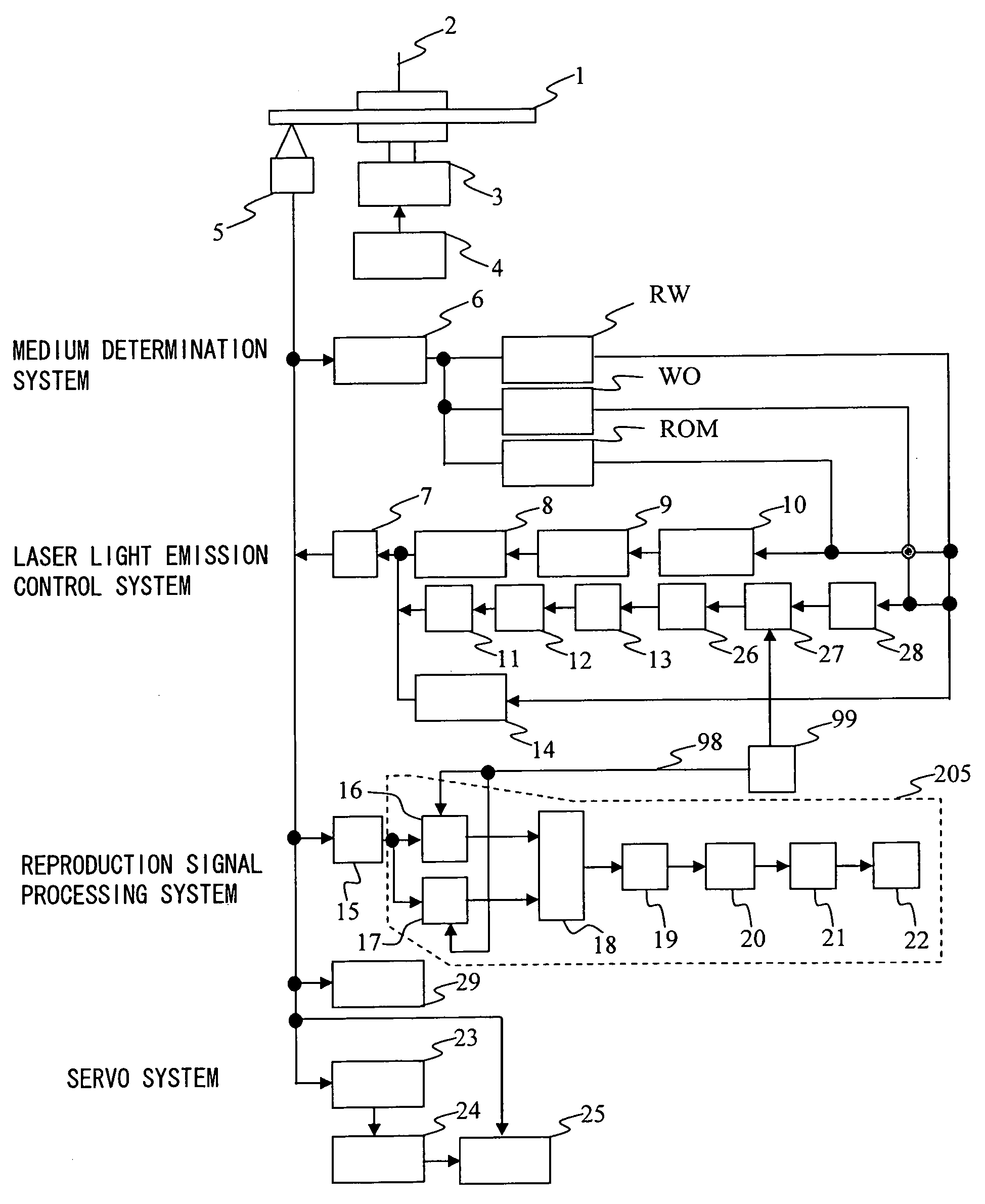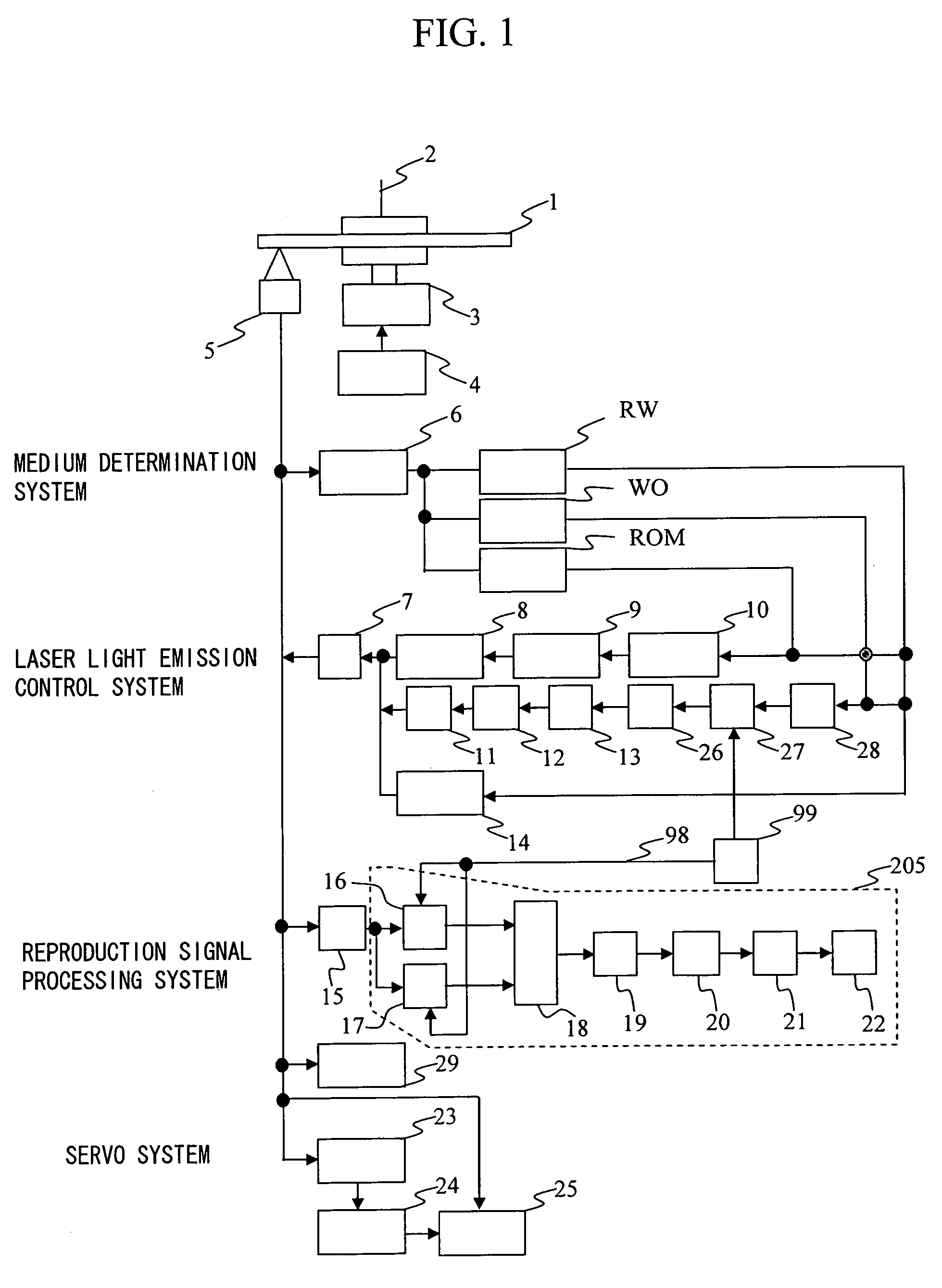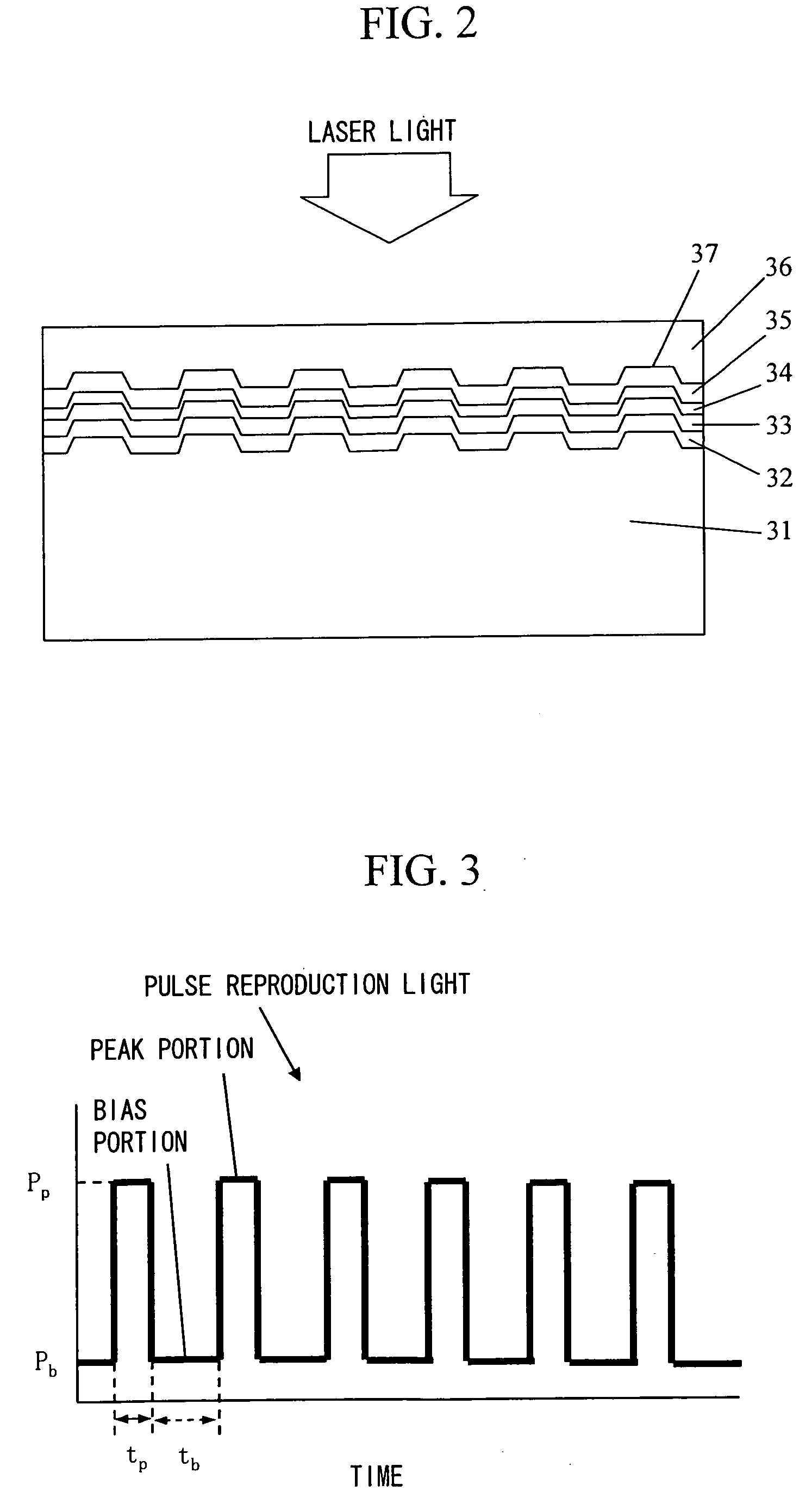Information reproducing apparatus and method
- Summary
- Abstract
- Description
- Claims
- Application Information
AI Technical Summary
Benefits of technology
Problems solved by technology
Method used
Image
Examples
example 1
[0046]FIG. 1 shows a block diagram of an example of an optical information recording / reproducing apparatus according to the present invention. In FIG. 1, numeral 1 denotes an optical information recording medium, numeral 2 denotes a spindle, numeral 3 denotes a spindle motor, numeral 4 denotes a motor circuit control means, numeral 5 denotes a pick-up, numeral 6 denotes a medium determination means, numeral 7 denotes a laser driver, numeral 8 denotes a reproduction power DC amplifier, numeral 9 denotes a reproduction peak power determination means, numeral 10 denotes a reproduction bias power determination means, numeral 11 is a recording power DC amplifier, numeral 12 denotes a recording peak power determination means, numeral 13 denotes a recording peak power ratio determination means, numeral 14 denotes an erase power DC amplifier, numeral 15 denotes a reproduction signal detecting means, numeral 16 denotes a peak sampling means, numeral 17 denotes a bias sampling means, numeral ...
example 2
[0090]Pulse reproduction will be reviewed from the viewpoint of signal response characteristics. FIG. 8 shows a diagram in which reflectivity R is a function of temperature T and the temperature dependence of a change ΔR in reflectivity is normalized by reflectivity Ro (30° C.) at 30° C. Reflectivity R(T) at temperature T can be expressed using the following equation with the change ΔR (T) in reflectivity:
R(T)=Ro(30° C.)·(1+ΔR(T)) (5)
[0091]Temperature T on a disk surface varies depending on a point (x, y) on the disk because it is irradiated with an optical spot, and therefore, reflectivity varies at each point (x, y) on the disk surface. When a disk having reflectivity R (x, y, T) is irradiated with a spot distribution S (x, y), its reflective spot distribution I (x, y) becomes a function of temperature as shown in the following equation:
I(x, y, T)=S(x, y)R(x, y, T) (6)
[0092]It can be assumed that the reflectivity is equal to Ro near the temperature 30 degrees, irrespective of ...
example 3
[0096]In the foregoing example, the response characteristics of super-resolution were improved with pulse reproduction signals alone. However, since the gain becomes large at midrange frequencies, it can be assumed that noise may increase at midrange frequencies and an overall signal-to-noise ratio may decrease. Thus, another example for correction using normal reproduction signals will be proposed. In FIG. 16, given that G(x, y) is the distribution of the increased temperature region on the super-resolution film, equation (8) can be derived, and reflection spot distribution I(x, y) can be expressed by equation (9).
R(x,y)=Ro·(1-G(x,y))(8)I(x,y)=S(x,y)·Ro·(1-G(x,y))=Ro·(S(x,y)-S(x,y)·G(x,y))(9)
[0097]In a current optical disk signal processing, a reproduction signal is deemed as a superposition of responses determined by an optical spot and a unit mark, and partial response or maximum likelihood detection is carried out. Thus, it is preferable to optimize the responses of the spot and...
PUM
 Login to View More
Login to View More Abstract
Description
Claims
Application Information
 Login to View More
Login to View More - R&D
- Intellectual Property
- Life Sciences
- Materials
- Tech Scout
- Unparalleled Data Quality
- Higher Quality Content
- 60% Fewer Hallucinations
Browse by: Latest US Patents, China's latest patents, Technical Efficacy Thesaurus, Application Domain, Technology Topic, Popular Technical Reports.
© 2025 PatSnap. All rights reserved.Legal|Privacy policy|Modern Slavery Act Transparency Statement|Sitemap|About US| Contact US: help@patsnap.com



